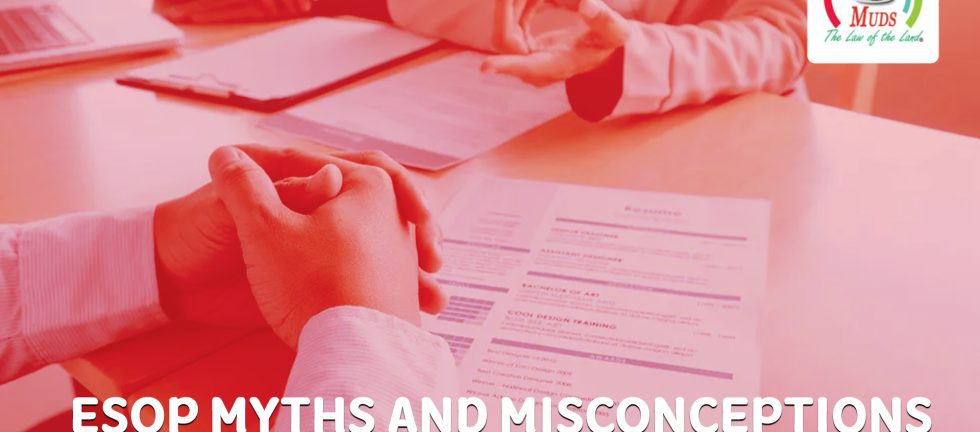Employee Stock Ownership Plans (ESOPs) are an appealing alternative that benefits both the corporation and its employees. ESOPs provide a significant rise in capital and reward, better job security and job contentment for employees, and a way to sell company shares, minimize turnover rates, and maintain the firm’s best talent.
Owners frequently embrace ESOP misconceptions, which hinder numerous transactions from taking place and approved businesses from becoming an employee-owned company
Summary
Nevertheless, due to misinformation or a lack of technical expertise, business owners are quick to dismiss ESOPs as a succession planning alternative or an exit strategy. However an ESOP is not appropriate for every business, it may be a good match for many. The following are the most important factors to consider while implementing ESOPs in a business:
(a) Consistent financial success,
(b) An efficient management board,
(c) Debt capability,
(d) A readiness to convert a portion of the firm to ESOPs, whether small or big.
With these important principles in place, Employee Stock Option Plan implementation in a firm can be effective. The choice to administrate and execute Employee Stock Option Plan inside a firm is crucial; thus, knowing the pertinent facts and having reliable information is required before making such a decision.
This article will address some of the following frequent myths and ESOP misconceptions about the Employee Stock Option Plan:
Most Common ESOP Myths and Misconceptions Regarding Esops
Employee stock ownership plans (ESOPs) can be an appealing approach for an owner to sell a firm while giving employees a part in the company. Employee stock ownership plans (ESOPs) are eligible retirement plans that acquire, hold, and sell business shares for the accomplishment of organizational objectives. One of the primary reasons ESOPs are frequently ignored as a valid succession planning option by business owners (and often their consultants) is owing to several erroneous ESOP misconceptions about them.
In truth, many firms are ideal candidates for ESOPs. Yet, company owners would never know since they believe that selling to a private equity group or another third-party buyer is their sole viable option.
After reading the truth behind the ESOP myths, company owners will realise that selling to an ESOP may be the greatest option and should be considered as an exit plan at the very least. This is especially true when the owner wishes to thank his or her staff for their contributions to the performance of the company.
1. The Cost to Implement Esops Are High
When contrast to other business or ESOP startup planning solutions, the cost of installing an ESOP is significantly cheaper, as brokerage, legal, and accounting costs are often rather expensive. In many circumstances, third-party transactions with an investment banking business or a broker charge a portion of the sale as “commission.”
This sum surpasses the hourly or fixed fee cost of running the ESOP program. Furthermore, about 68 per cent of Indian listed firms and 29 per cent of unlisted companies provide ESOPs to employees at no expense to the company.
According to tax legislation, if an employee keeps shares in a publicly-traded firm for more than a year, the capital gains are tax-free; hence, Indian workers exercise the option early, with 90 per cent doing so within two years.
2. ESOPs Only Covers Big Companies
Financial performance is a more important component than its size. ESOPs with 12 to 15 employees and less than $1 million in yearly revenue are common. The firm must be substantial enough to make a profit sufficient to fund the yearly maintenance of ESOP implementation.
In the United States, for example, the ESOP plan association states that 71% of its members have less than 250 employees, while the typical member has annual revenues of $20 to $50 million.
3. An ESOP Plan Is Only for Employee Benefit
ESOPs help both the corporation and the employees since they meet a wide variety of commercial goals and give tax advantages to the company. In most situations, the primary goal is to establish an internal market for current owners rather than to provide another choice for employee perks.
Companies in India and throughout the world use ESOPs to reward and retain their employees while also ensuring that all employees strive to improve the company’s performance and profitability. ESOPs also allow for decreased employee turnover and talent pool retention. As a result, ESOPs are advantageous not just to employees, but also to the firm.
4. Companies With ESOPs Are Less Competitive
As per a recent column from the Employee Ownership Foundation, “Employee-owners perceive their ESOP startups, their work, and their responsibilities differently, allowing them to perform more successfully and increasing the likelihood that their company will flourish. Employee-owners are inherently more responsible for their own and their coworkers’ job performance because they have a vested interest in their company’s success.”
5. ESOPs Won’t Improve Employee Performance
Multiple studies show that employee ownership through ESOPs increases firm performance owing to the financial benefits of ESOPs as well as enhanced employee engagement and morale. The special tax benefits of ESOPs (for example, tax-deductible principal on ESOP program debt, tax-deductible ESOP dividends, the opportunity to form an income tax-free organization with a 100 per cent ESOP-owned corporation, and so on.
Conclusion
An ESOP is, without a doubt, viable employee welfare and own strategic planning option. It can also be used to obtain additional equity capital, refinance outstanding debt, and acquire productive assets through third-party borrowing. By dispelling the ESOP myths and misconceptions surrounding ESOPs, you can correctly analyse the benefits of creating an ESOP and make a smart decision that will lead your company’s advancement in the coming years.


